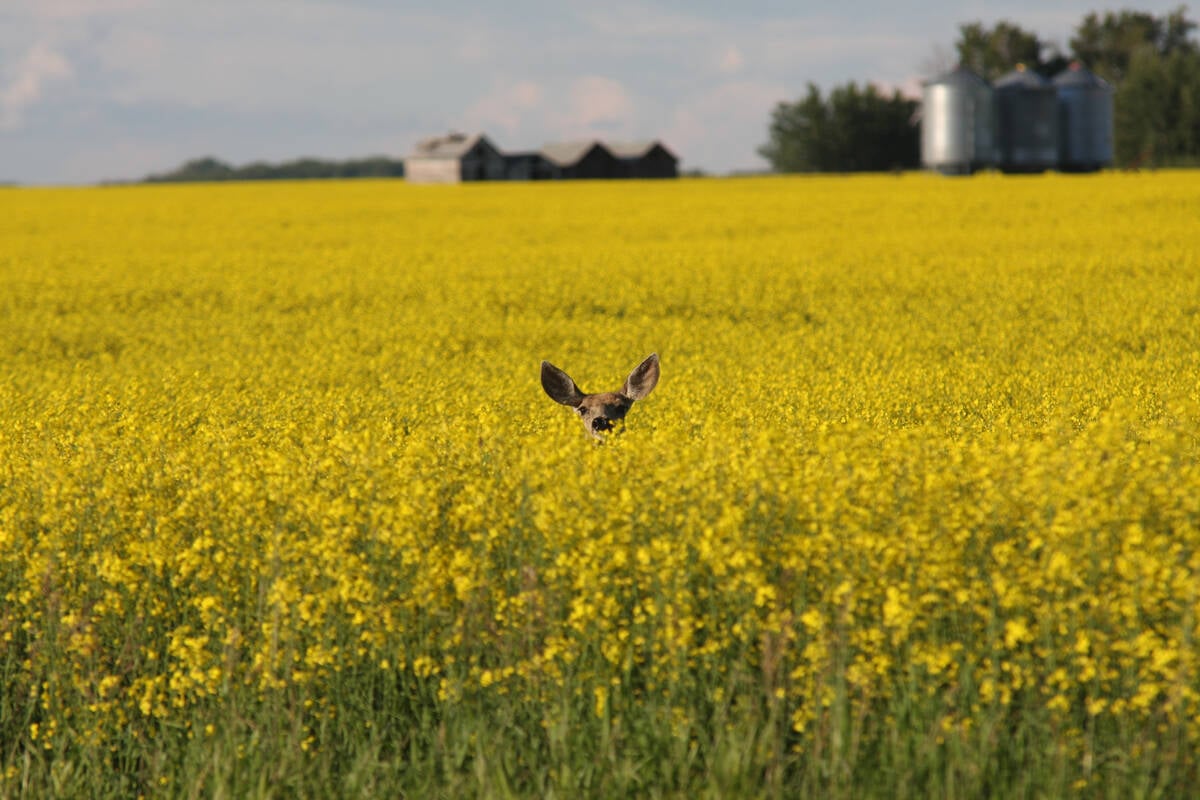With winds howling at 150 kilometres an hour and the sounds of smashing buildings and terrified animals filling the fierce night air, Nova Scotia dairy farmer Brian Yuill and a tenant headed out into the storm to try to rescue some calves.
It was a short-lived rescue effort.
Yuill watched as a calf hutch blew across the yard and flattened his companion.
“We just headed back to the house,” he recalled. “I said, ‘let her go’. It blew him right out of his shoes. We found his shoes in the yard the next morning.”
Read Also

Drones now used to assess wildlife crop damage in Saskatchewan
Wildlife damage in Saskatchewan crops is now assessed by drones and artificial intelligence.
The terrifying scene unfolded in the early morning of Sept. 29 as Hurricane Juan cut its destructive path through Nova Scotia, laying waste to a 50-kilometre-wide swath of the province before moving on to Prince Edward Island.
In its wake, Juan would leave $100 million in damages, including scores of wrecked farms. Its north-south path took it through the heaviest concentration of dairy farms in Atlantic Canada.
“Farmers are just now beginning to take stock of the damage,” Laurence Nason, chief executive officer for the Nova Scotia Federation of Agriculture, said in an Oct. 8 interview.
There were reports that scores of cattle were killed or had to be destroyed, dozens of farms were badly damaged and as many as 1,500 acres of grain corn were flattened.
Some farms were without electricity for days, depending on back-up generators or ones rushed into the devastated area by farmers spared the catastrophe.
“Another factor is that a lot of woodlots were badly damaged and many farmers rely on them for income,” said Nason. “It really was devastating and farmers had few options. If my office was hit with a hurricane, I’d go home. If a hurricane hits the farm, that is both home and office. They have to stay to salvage what they can.”
Amazingly, there were no casualties on the Yuill farm and all the animals survived.
However, he was left with an estimated $100,000 in damage, including a barn that toppled over and smashed.
“It is quite a setback,” he said a week and a half after the storm. “We’ll have to try to get some kind of a barn up before winter. And a lot of our losses weren’t insured. It’s going to be a tough winter. We haven’t even started the cleanup yet.”
The federal government has promised some aid money to Nova Scotia, although the amount that will be allocated to farmers is unknown.
Nason said the Bank of Montreal is making plans to launch an “adopt a cow” program that will allow Canadians to contribute to relief and rebuilding efforts by making deposits in bank branches across the country.
Yuill said that despite the wild night, his 70-head dairy herd has not missed a milking, he lost no animals and electricity was back on after 20 hours. Some farmers were more than a week without power and lost animals.
In Halifax, two people were killed in the storm.
“In a way, I guess we were one of the lucky ones,” said the young farmer. “It was frightening though. I’ve never heard loud like that.”














